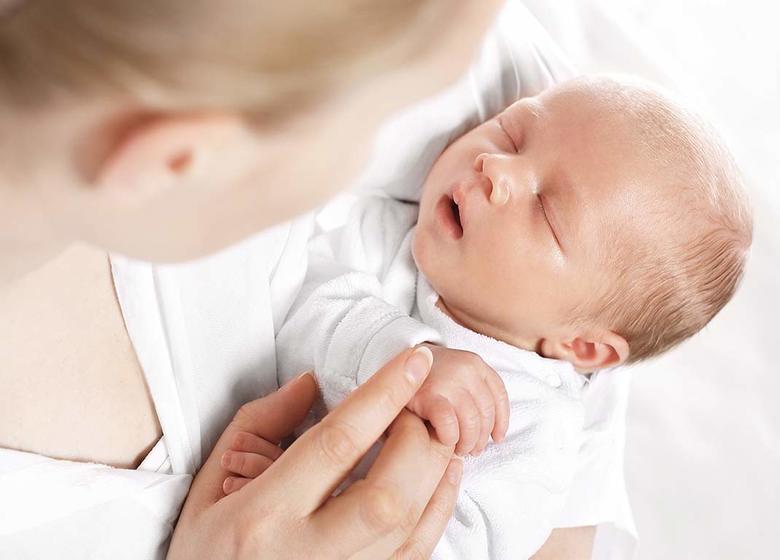New-born breathing pattern: What is normal and when to see a doctor
If you’ve noticed your new-born breathing a bit irregularly, you may wonder if everything is normal with your child. New-borns often have irregular breathing patterns that concern new parents. They can breathe fast, take long pauses between breaths, and make unusual noises.
After you struggle with the ways to make your new-born sleep, it is the way they sleep, breath and move during sleep that concerns you. You need not be so concerned as it may fall upon your health as well. Read more to calm your worries.
Why is a New-born’s breathing different from an adult’s breathing pattern?
New-borns’ breathing looks and sounds different from adults because:
- they breathe more through their nostrils than their mouth
- their breathing pathways are much smaller and easier to obstruct
- their chest wall is more pliable than an adult’s because it’s made of mostly cartilage
- their respiration isn’t fully developed since they still have to learn to use their lungs and the associated breathing muscles
- they may still have amniotic fluid and meconium in their airways right after birth
Normal New-born breathing
Typically, a new-born takes 30 to 60 per minute. This can slow down to 20 times per minute while they sleep. At 6 months, babies breathe about 25 to 40 times per minute. An adult, meanwhile, takes about 12 to 20 breaths per minute.
New-borns can also take rapid breaths and then pause for up to 10 seconds at a time. All of this is very different from adult breathing patterns, which is why new parents might be alarmed.
Within a few months, most of the irregularities of new-born breathing resolve themselves. Some new-born breathing issues are more common in the first few days, such as transient tachypnea. But after 6 months, most breathing issues are probably due to allergies or a short-term illness like the common cold.
What is normal breathing for a baby at night?
Your newborn breathes in cycles, with breaths getting progressively faster and deeper, then slower and shallower. This is called periodic breathing. He may pause his breathing for up to five seconds or even longer, then start up again with deepening breaths.
This is normal, and will change into a more mature pattern of breathing, with occasional sighs, in his first few months of life. If you want to reassure yourself that his breathing is normal, here are three ways to check:
- Listen:put your ear next to your baby’s mouth and nose, and listen for sounds of breath.
- Look:bend down so that your eyes are level with your baby’s chest, and watch for the up-and-down movement of breathing.
- Feel:put your cheek next to your baby’s mouth and nose and feel his tiny breaths against your skin.
Make Note of Sounds and Motions
Babies are natural nose-breathers and not mouth-breathers. This is what allows them to breathe and eat at the same time. They will usually breathe exclusively through their nose until about 6 months and by the first birthday, they’ll breathe more through the mouth.
Due to this, you’ll experience a full range of whistling, gurgling, and snorting sounds as their tiny nasal passages breathe in air. As you are getting acquainted with your new bundle of joy, make note of the following behaviors your baby displays in various situations:
- General sounds and noises they makes as they breathe.
- The degree to which their nostrils tend to flare as they breathe during different activities.
- The rhythm of their chest rising and falling.
- Sounds that are unique to when they feed from the breast or the bottle.
- The sound when they sneeze. Don’t worry, new-borns sneeze frequently for good reasons.
- How their breathing sounds change as you change their position.
Also, while adults breathe between 18 and 20 times per minute, new-borns have much smaller lungs, so they must breathe more often. Generally, a new-born baby will take between 40 and 60 times each minute.
Perfectly Normal Breathing Noises
After some time observing your precious bundle, you’ll begin to see that he really does make lots of different noises. These are generally no cause for alarm. Some sounds you might hear include:
- Gurgling: This is due to saliva pooling at the back of the mouth.
- Snorts: You may hear these if your new-born is in deep sleep.
- Hiccups: Babies are prone to hiccups, both when they are in the womb and when they join the world.
- Whistling: Because the new-born nasal passage is so narrow, you’ll often hear whistling as he draws in a breath.
Other common sounds and their causes
Hoarse cry and barking cough
This noise may be from a windpipe blockage. It might be mucus or an inflammation in the voice box such as croup. Croup also tends to get worse at night.
Deep cough
This is likely a blockage in large bronchi but a doctor will need to listen with a stethoscope to confirm.
Wheezing
Wheezinga can be a sign of blockage or narrowing of the lower airways. The blockage might be caused by:
- asthma
- pneumonia
- respiratory syncytial virus
Fast breathing
This can mean there’s fluid in the airways from an infection, such as pneumonia. Fast breathing can also be caused by fever or other infections and should be evaluated right away.
Snoring
This is usually due to mucus in the nostrils. In rare cases, snoring can be a sign of a chronic problem such as sleep apnea or enlarged tonsils.
Stridor
Stridor is a constant, high-pitched sound that indicates an airway obstruction. It can sometimes be caused by laryngomalacia.
Grunting
A sudden, low-pitched noise on an exhale usually signals an issue with one or both lungs. It can also be a sign of severe infection. You should visit a doctor immediately if your baby is ill and is grunting while breathing.
When to see a doctor
This shouldn’t necessarily cause concern. However, pay attention to other signs of respiratory distress and contact a doctor immediately if your baby:
- Turns blue all over or in areas that get a lot of blood flow (the lips, tongue, and the vagina, for example). Note: Bluing of the hands and feet can be fairly common due to an infant’s immature circulatory system. This alone is not a cause for concern, so long as it is only in those areas.
- Has a significantly increased breathing rate (more than 60 breaths per minute)
- Struggles to breathe, which can be spotted by the nostrils persistently flaring and the chest retracting unusually
- Is feeding poorly
- Is lethargic
Now that you know how to observe your baby and understand what is normal, you can take a deep breath yourself. Enjoy all of your baby’s funny sounds, but remain aware of any changes and don’t hesitate to ask questions to your baby’s doctor.
Also read – Why do babies smile in their sleep?













